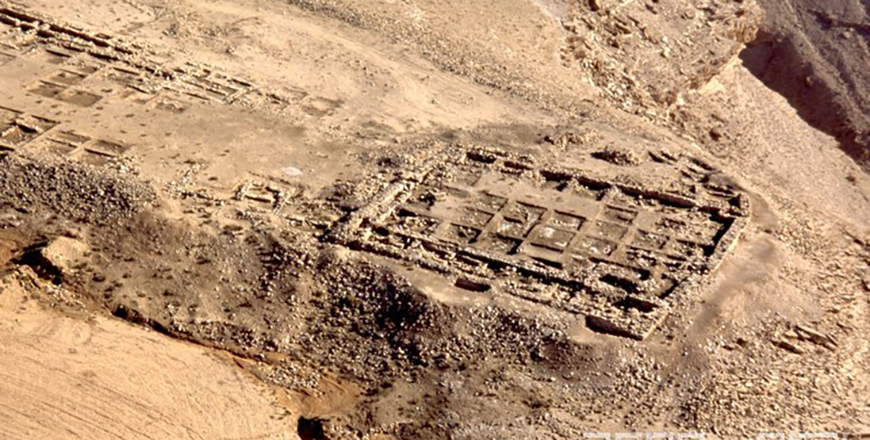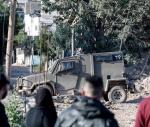You are here
Study unveils dual function of ancient pithoi in Sahab — storage, funerary practices
By Saeb Rawashdeh - Jan 04,2024 - Last updated at Jan 04,2024

A pithos displayed at the Jordan Museum in Amman (Photo of Saeb Rawashdeh)
AMMAN — Pithos is the Greek name for a large storage container popular in the area of Mediterranean during the Neolithic, the Bronze and the Iron Age. The large container was used to keep fluids and grains in the household or during the maritime trade. Archaeologists found human bones in some pithoi as they were transformed into a coffin for funerary rituals. The huge lid would close the mouth of the container which was as high as a human. Jars of this size could not be handled by individuals due to its heaviness so special harness helped traders lift the full pithos.
A group of archaeologists studied two large pithoi excavated in Sahab at domestic houses, which indicate their primary function as storage jars, while the deliberate removal of their mouths and parts of the shoulders indicates their secondary function for burial practices.
“The radiocarbon date of the skeleton [bone fragments] uncovered from the first jar and archaeological date of both jars indicate that the tradition of jars burial continued during the Late Bronze-Early Iron Ages,” noted Professor Emeritus Moawiyah Ibrahim, who taught at Yarmouk University in Irbid.
Furthermore, the difference in fabric and firing temperature and atmosphere of the two jars might indicate different pottery workshops or time periods for their production.
Chert temper (a non-plastic material added to clay to prevent cracking during pottery drying) plaster used in the first jar, while the apaptite in the second jar most probably derived from clays containing fish bones, the professor speculated, adding that very likely these jars were produced locally as the huge size of containers would be an obstacle for a far transport.
“The firing temperature of the first was probably below 850oC, while the second jar was fired at temperatures slightly above 850oC,” Ibrahim explained, adding that y, the jars were mainly dry and then cleaned with water.
Sahab, a south-eastern suburb of Amman is located about 16km from the downtown. It has been connected with the desert castles — Muwaqqar, Mshatta, Harraneh and Qseir Amra.
Professor Ibrahim was a member of the team which between 1972 and 1980 explored the area and it was a rescue excavation between Yarmouk University and the Department of Antiquities.
“Sahab has a long history of occupation extending from the Late Neolithic/Chalcolithic [5th and 4th millennia BC] to the Late Iron Age. After the 6th century BC, the site was probably abandoned until the Mediaeval Arabic period [11th -13th century AD], evidenced by Ayybid-Mamluk handmade pottery sherds,” Ibrahim highlighted.
Another occupational gap ran from the 13th to the 19th centuries, at which time the present inhabitants moved to the site.
Regarding the finds, a group of eight jars with cutoff mouths used for burials were uncovered from a cave together with rich Iron I deposits including scarabs, alabaster vases, pottery and metal objects, the professor elaborated, adding that the jars were arranged in four pairs forming an M-shape in which the mouths of each pair were contiguous and facing each other.
“These jars are similar to collared-rim jars excavated from other areas at Sahab and were dated to the Early Iron Age,” Ibrahim noted, adding that only two of the above mentioned eight jars from Sahab were stored at the storage facility at Yarmouk University, Jordan.
This team studied the two jars after a decision to display them in the Museum of Jordanian Heritage at Yarmouk University.
“At the end, both jars were displayed in the Museum of Jordanian Heritage at Yarmouk University, Jordan,” Ibrahim said, adding that bone and tooth samples were chemically pretreated and dated at the NSF-Arizona Accelerator Mass Spectrometry Laboratory.
Related Articles
AMMAN — Wadi Rum is a desert on the southern part of Jordan also known the Valley of Moon.
AMMAN — Material culture did not experience break between the Bronze and the Iron Age at Pella, a site in north-western Jordan.
AMMAN — Khirbet Al Lehun is located in the central Jordanian massive, north of Wadi Mujib.




















